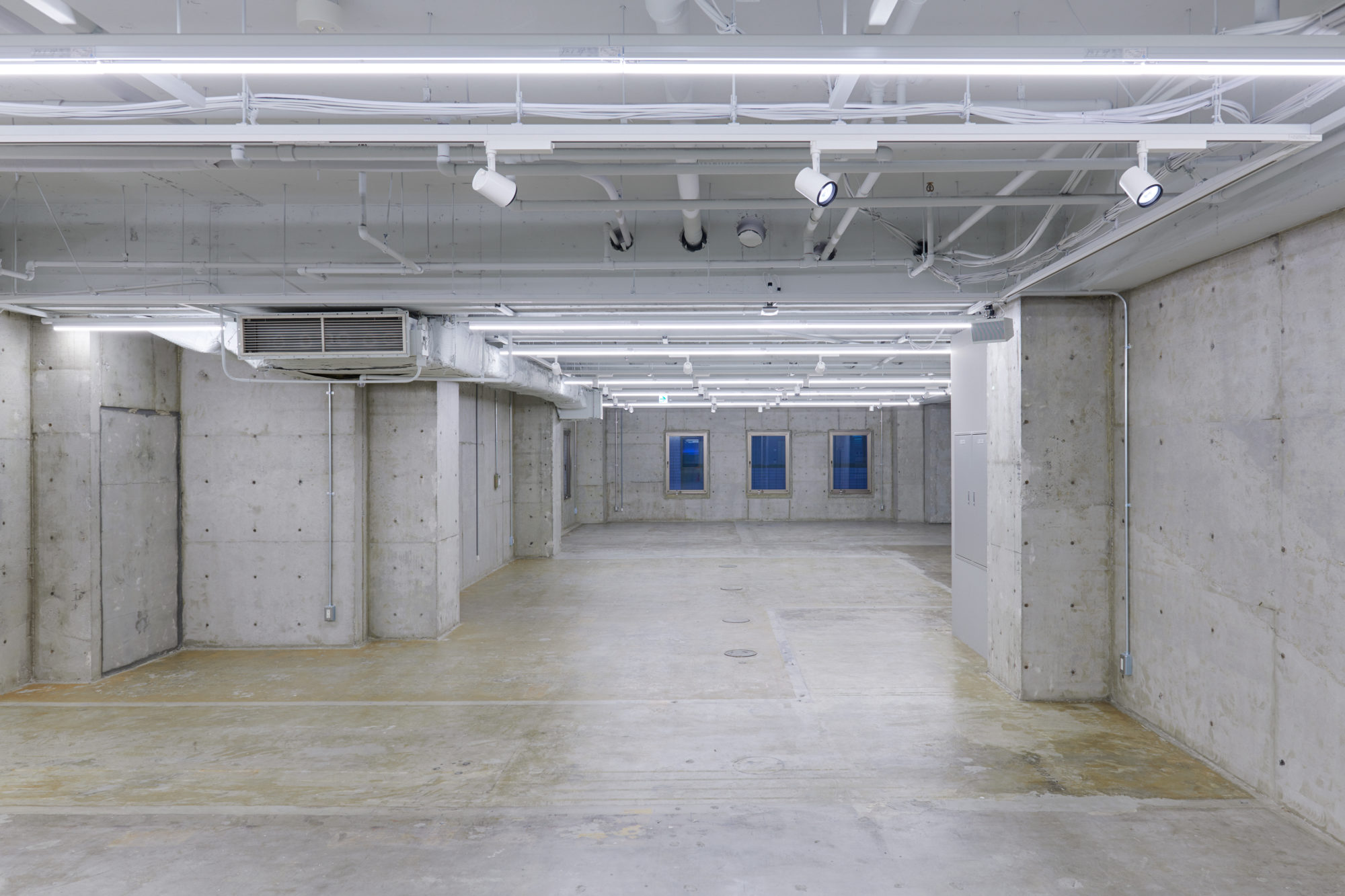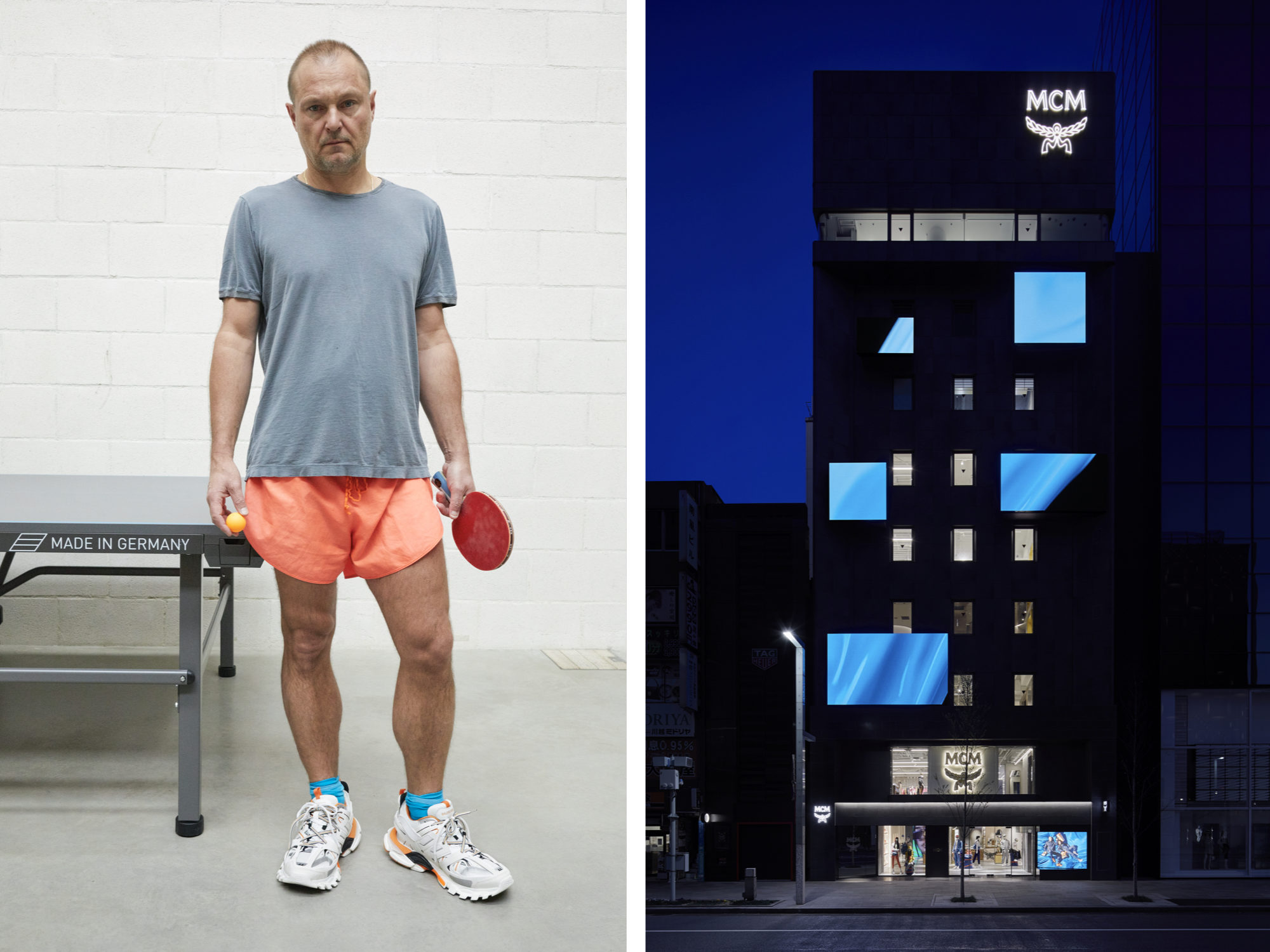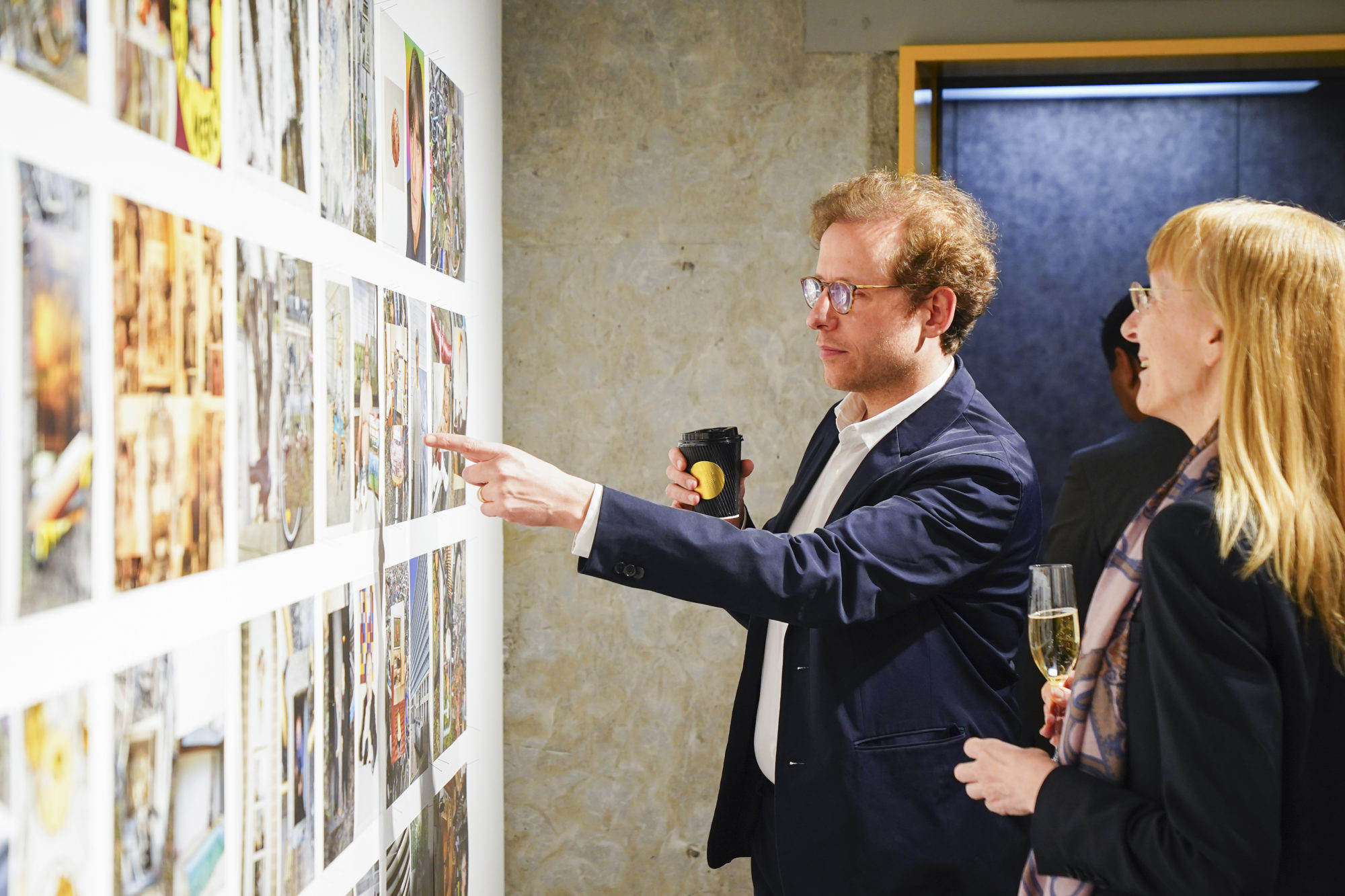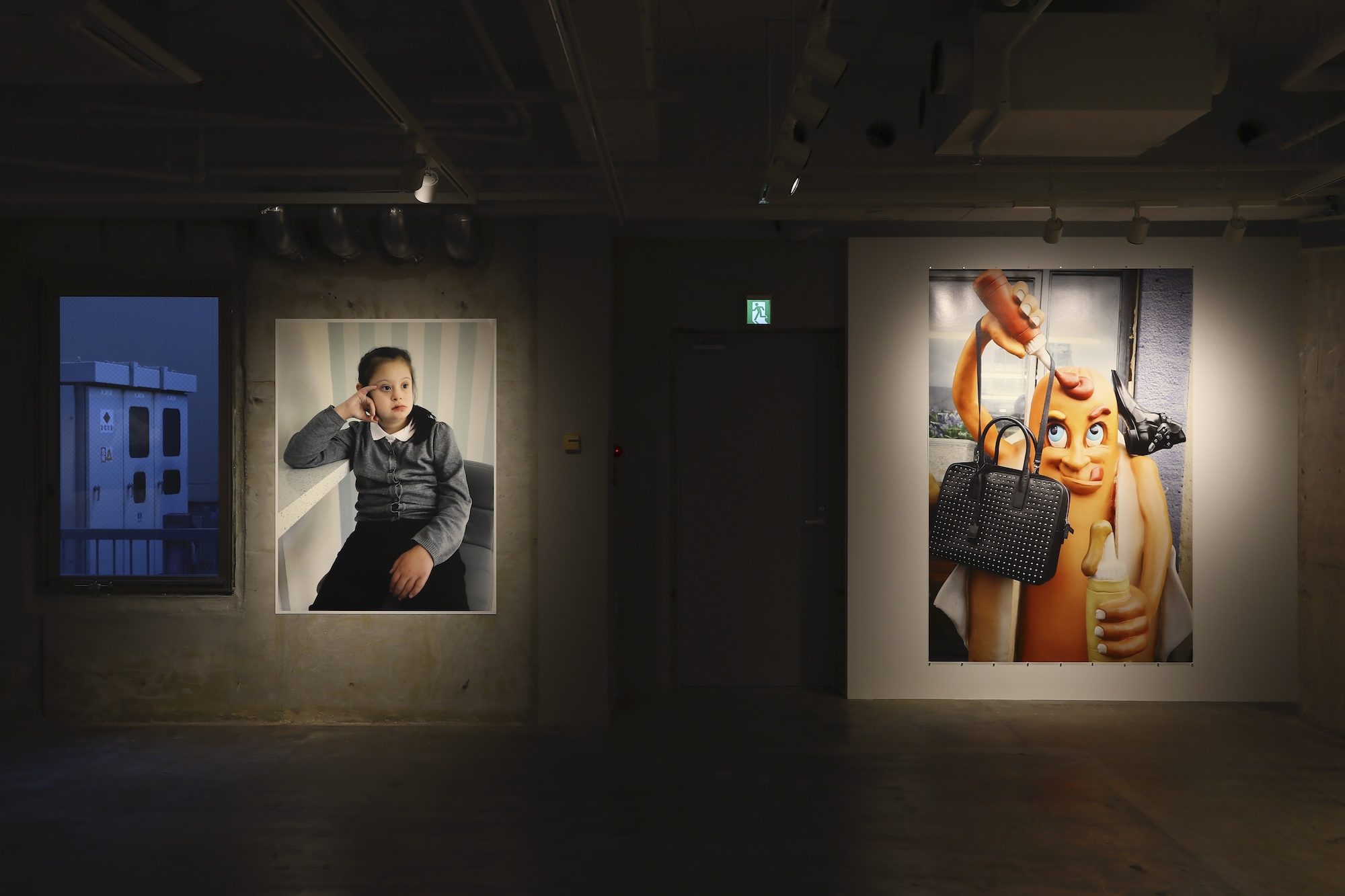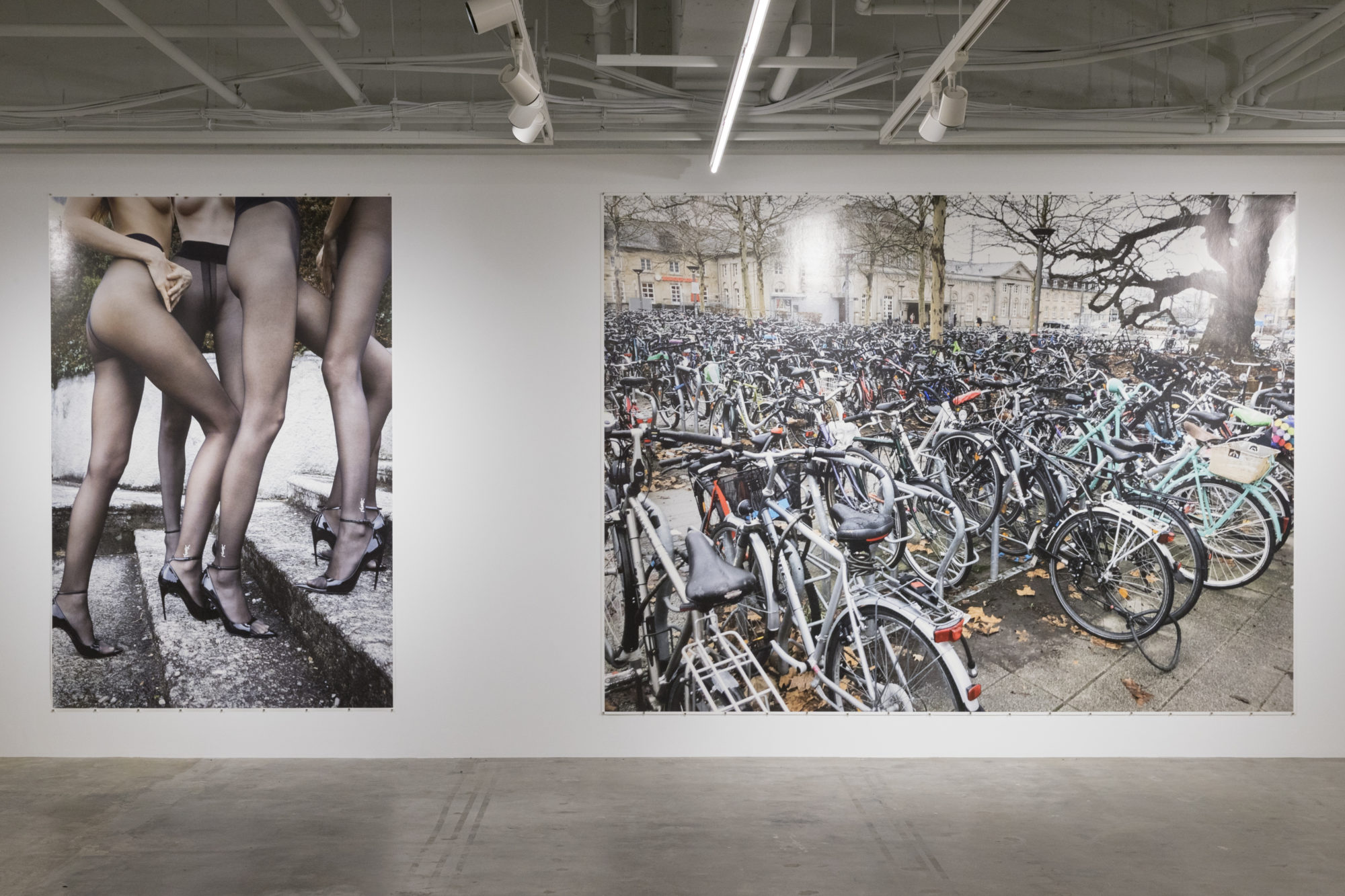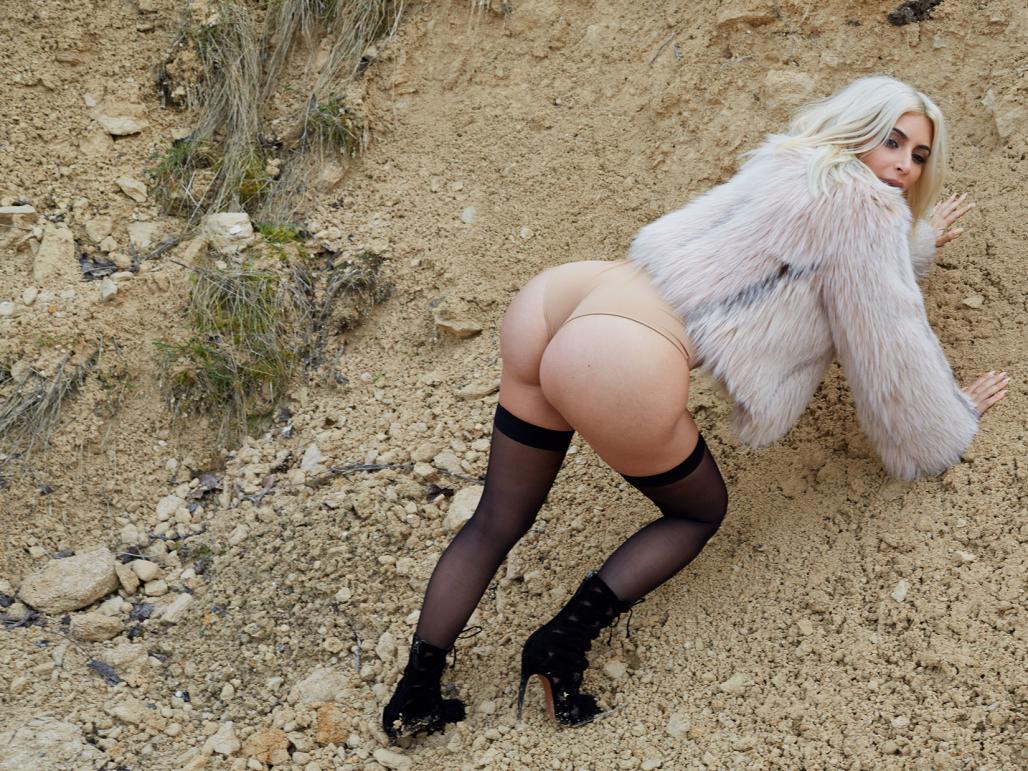When Johann König was in Seoul last year scouting for the third outpost of his eponymous gallery, he happened to meet Korean entrepreneur Sung-Joo Kim, the founder and chairperson of the German luxury brand MCM. Instead of Seoul, Kim advised König, why not set up shop on the sixth floor of her new experiential MCM flagship in the heart of Tokyo’s Ginza neighborhood?
For König, the idea of putting his esteemed gallery atop a flashy retail store was just out there enough that within weeks he’d signed a contract. “Most people have asked me why Tokyo,” König says. “We have always believed in making unexpected moves.”
König is probably best known for the gallery he created with architect Arno Brandlhuber in a 1960s deconsecrated Catholic church in Berlin in 2015. Moving into the Brutalist-style church was a clever move: Not only has the gallery become a must-visit destination within the city, many of the artists within his stable, such as Elmgreen & Dragset, Erwin Wurm, and Alicja Kwade, have been drawn to the notion of showing work outside the white cube. In 2017, König opened a space in London, inside a subterranean car park in Marylebone. In that context, moving into a conceptual retail store in Ginza seems like a more than logical next step.
König purposefully scheduled the debut exhibition for November 9, 2019, the 30th anniversary of the fall of the Berlin Wall. It was, he felt, an auspicious time to open a gallery showcasing German-speaking artists in Japan. “I prefer bridges to walls,” he says, noting a mutual fascination between the Germans and the Japanese.
He has become enamored with the respectful nature and famous precision of the Japanese. “It’s a bit like time travel to old Germany in the ’80s and ’90s. No trains are ever late.” While there might not be a large contingent of big collectors in Japan, he finds the ones who are there interesting. Tokyo, he notes, gets a lot of traffic from Australian, Korean, and mainland Chinese collectors.
For the opening show, he enlisted an old friend, celebrated photographer Juergen Teller. Titled “Heimweh,” a German word which loosely translates to “homesickness,” it showcases a mix of new and earlier work by Teller, including selections from a portfolio that he created for German Vogue’s 40th-anniversary issue this past October. In many ways, the show represents a full-circle moment for their relationship; Teller exhibited his work in König’s first gallery 15 years ago.
The large-scale pieces that Teller and König selected—among them images of a jumble of bikes, a forest landscape, portraits of the artist Gerhard Richter, and a cartoonish sausage holding a handbag—feel like a sensual celebration of modern Germany. That idea is perhaps most obviously expressed in Teller’s centerpiece collage, a patchwork of images that he shot largely in Germany. They hold a special meaning for the photographer, who has lived in London since 1986 but always returns to his home country.
The expansion to an unfamiliar market such as Tokyo is a bold move for König, whose unconventional tactics and taste have earned him admiration in Europe, particularly in his native Berlin and in London. But it’s not exactly out of character. He was born into an illustrious art-world family. His father is the renowned German curator Kasper König, his mother was a successful actress and illustrator who was previously married to filmmaker Wim Wenders, and his uncle Walther König was a respected publisher of art books.
And yet Johann, from an early age, had to forge his own way. At 12, he suffered severe damage to his eyesight when gunpowder blew up in his face while he was playing with it. As a result, he was sent to a boarding school for blind children in Marburg where he was often forced to ski downhill or ride horses, despite his handicap. “I hated it,” he recalls. “But it made me fearless.”
During his final year of school, despite his parents’ discouragement, König covertly secured a loan from his uncle and plotted his first gallery in Berlin. “When I finally told my father about the gallery, it was too late to change anything,” König says. “So he encouraged me to sell small art and not take any risks. I followed his advice but it didn’t go anywhere.”
His friend at the time, the Danish artist Jeppe Hein, told König about his desire to build a massive iron wrecking ball that, when approached, would activate and destroy the room it was in. “I found the idea so great and wanted to realize it,” König says. “At that point, my gallery was not doing well anyway, so I thought at least I’ll go down with trumpets blaring.”
Hein’s wrecking ball turned out to be a huge success both commercially and critically. “From an objective point of view, the whole thing was crazy. Who would buy a wrecking ball that destroys your home?” König says. “But it was the idea I favored over everything else. The experience shaped me and gave me huge confidence.”
What may also have struck observers as crazy was the fact that a nearly blind man decided to pursue a career as a gallerist, even if his passion was toward artists that were more about ideas than aesthetics.
“Even before my accident, I identified more with artists like Dan Graham—art that initiates dialogue,” he says. “I like to get people to start asking questions. Although a cornea transplant briefly improved his vision in 2009, König’s eyesight has deteriorated in the past few years. Which raises the question, How does he decide which work he likes?
In part, by the artist explaining it to him, he says of a process that he believes proves beneficial to both parties. “I like his enthusiasm and his unorthodox thinking,” says Teller. “The crazy handicap of his eyes—I’m attracted to that. He’s just a funny guy.”
As for König, he’s already in the planning stage for König Vienna, and in negotiations to turn an abandoned cable factory in the industrial Oberschöneweide neighborhood of Berlin into dozens of artist studios. But Tokyo has now become a special place to him.
“I really miss it when I’m back in Germany,” he says. “For me, it’s the perfect environment because it’s so clean and people are very careful and polite. It’s funny, because even with my bad sight, I experience it the same. I can’t read writing anymore, but neither can anyone else who doesn’t speak Japanese.”
